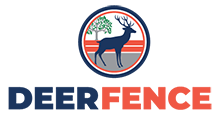Garden Management For Wildlife Movement
Beginning gardeners may think that once the snow comes, growing season is over; but veteran growers know better. The winter season is when growers need to be creative on how they protect their gardens from frost damage and nosy wildlife. Here are a few things to keep in-mind to continue to grow this winter season.
Winter Garden Maintenance

There are many plants to grow outside in the winter that can be used as side dishes or salads including onions; garlic; asparagus; peas and leafy greens like spinach.
Growing these winter crops can ensure that cooks have a healthy supply of fresh vegetables directly from the garden. However, gardeners cannot simply plant these veggies and walk away. They will need to prepare the soil for chilly weather conditions and snow.
Gardeners may need to bring plants inside for indoor growing; move plants to a cold frame; or place blankets around growing areas to insulate them.
Soil will need to be treated and prepared with organic matter after avoiding old mulch.
Homeowners may need to prune back perennials, such as roses, and other types of plants to avoid plant diseases, as well. Grape growing, for example, can begin in the late spring; but pre-existing grape vines will need to be pruned back to protect the buds from diseases. Trees baring fruit should also be trimmed back to protect the buds from cold damage. This action helps maintain the plants in the winter and get them ready to thrive in spring. And, a continuing concern in winter will be tick diseases from ticks that are hiding underneath fire logs and leaf piles. And, what is the number one carrier of ticks in the United States? Deer.
Deer

Deer are desperate for food and will approach lawns and gardens to find any type of food to eat. (As you can imagine, natural resources are slim-pickings in the wintertime; and deer will need to rummage through snow to find leaves, twigs, buds and any remaining greenery.) This is bad news for gardeners as they prepare gardens for the winter growing season.
But, the news gets even worse for whitetails...
It's hunting season; and our white-tailed friends need to avoid deer chasers as to not become deer meat. To accomplish this, deer will not only move away from woods; but they move in on home gardens to seek food. This will occur in the early morning and evening hours to avoid chilling wind gusts and to get first dibs on whatever is left from home gardens before homeowners can spot them.
Coyotes
And, deer are not the only wild animals that homeowners need to worry about. In fact, homeowners will see just as many coyotes on landscapes as bucks and does. Teenage coyotes leave their parents in December to fend for themselves and scout for their own food. Then, January is coyote breeding season, leading to an influx of coyotes on lawns.
Ugh -but, that's not all...
Rabbits
Like deer, rabbits eat a variety of greens in the wintertime including twigs, leaves, buds, bushes and conifers. They will approach small-scale gardens in hopes of finding winter vegetables and will eat any remaining veggie plants. This will hold them over until spring when flowers and spring vegetable plants are growing.
And, just when you thought that was enough to worry about....the grand finale
::drum roll please::
Bears
Bear hibernation is not what you think. Bears don't go into full sleep mode; but instead, slow down in movement. This allows them to control metabolism and store food in their systems longer that they gathered from fall. In fall months, Black Bears gained 30 pounds of food each day, while Brown Bears put on 90 pounds each day in preparation for winter hibernation. This weight gain came from eating grasses, roots, twigs, leaves, buds, fish, insects and small mammals.
Wildlife Management Planning

To protect plants from hungry deer and other wild animals, gardeners will need to act on wildlife management solutions such as fence installation. Having a fence around yards and home gardens is critical in winter as gardeners prepare for spring planting (prime season for agricultural damage from wild animals). Once spring comes, home growers can plant flowers for deer-resistance as a secondary layer of protection around a deer fence.
Do More In Winter; Less In Spring
If homeowners act now to control deer populations, and other types of wild animals this season, then they will see a reduction of wildlife on landscapes moving into spring when flowers and veggies are thriving.
Here is a fence chart with suggestions to help control wildlife damage:
| Plastic | Metal | Electric |
| For light to moderate deer pressure, no chewing animals. | Moderate to high deer pressure; rabbits; coyotes; wolves; groundhogs; and livestock security. | For deer; bears; wild hogs; livestock (not effective for bird control*). |
